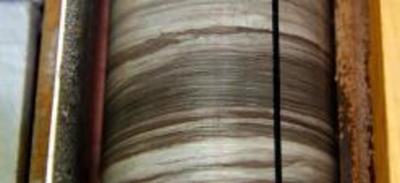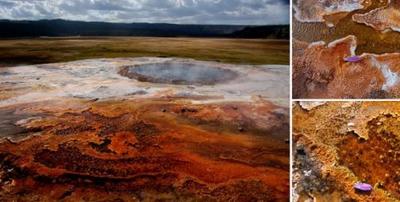Deep Time
The vast majority of our understanding of the Earth, its oceans, atmospheres, and life, comes from the most recent 15% of its history. PAOC Deep Time research seeks to shed light on the first 85% of Earth’s history using a wide array of techniques, and incorporating sub-disciplines as wide ranging as quantitative modeling, paleontology, organic geochemistry, sedimentology, and astrobiology.
 Our understanding of the deep time record of Earth’s history relies on evidence found in ancient sedimentary rocks, the sole survivors and scribes of Earth’s past. Through the analysis of these rocks, and the chemical compounds they contain, we can begin to reconstruct major transitions in the Earth system – the evolution of bacterial metabolisms, the first eukaryotic cells, the advent of complex, multicellular life, and the dramatic changes in atmospheric and ocean composition that occurred alongside these biotic revolutions. One window into Earth’s deep history comes from the nature and distribution of organic lipid biomarkers, originally sourced from microbial cell membranes, which are preserved in ancient seafloor sediments. The identity of these biomarkers and analysis of their isotopic composition allows us to examine biotic communities and track how they change through time. We can then work towards reconstructing ancient environments and correlating changes in microbial composition and metabolisms with changes in atmospheric and oceanic composition. Through this research, we hope to obtain a better understanding of major events including the timing and context of oxygenic photosynthesis, the conditions that led to the appearance of eukaryotic and metazoan life on earth, and the causes of major mass extinction events. Quantitative models can aid in our understanding of the early Earth by examining the interaction of life with the geological, geochemical, and geophysical evolution of the Earth. This work is closely tied to geochemical analyses of ancient sedimentary rocks and the fossils, molecular and otherwise, found within them. By integrating these multiple historical records into quantitative models, we seek to better explain phenomena in the Earth’s early oceans, including major isotopic excursions and evolutionary innovations. By using multiple data sources, analytical techniques, and quantitative models, the Evolving Early Earth researchers are working towards more nuanced and detailed reconstruction of early Earth’s biota and environments. In addition to providing a greater understanding for Earth’s past, this work also provides a greater understanding of the complex interactions and feedbacks that exist between Earth’s systems over all time scales.
Our understanding of the deep time record of Earth’s history relies on evidence found in ancient sedimentary rocks, the sole survivors and scribes of Earth’s past. Through the analysis of these rocks, and the chemical compounds they contain, we can begin to reconstruct major transitions in the Earth system – the evolution of bacterial metabolisms, the first eukaryotic cells, the advent of complex, multicellular life, and the dramatic changes in atmospheric and ocean composition that occurred alongside these biotic revolutions. One window into Earth’s deep history comes from the nature and distribution of organic lipid biomarkers, originally sourced from microbial cell membranes, which are preserved in ancient seafloor sediments. The identity of these biomarkers and analysis of their isotopic composition allows us to examine biotic communities and track how they change through time. We can then work towards reconstructing ancient environments and correlating changes in microbial composition and metabolisms with changes in atmospheric and oceanic composition. Through this research, we hope to obtain a better understanding of major events including the timing and context of oxygenic photosynthesis, the conditions that led to the appearance of eukaryotic and metazoan life on earth, and the causes of major mass extinction events. Quantitative models can aid in our understanding of the early Earth by examining the interaction of life with the geological, geochemical, and geophysical evolution of the Earth. This work is closely tied to geochemical analyses of ancient sedimentary rocks and the fossils, molecular and otherwise, found within them. By integrating these multiple historical records into quantitative models, we seek to better explain phenomena in the Earth’s early oceans, including major isotopic excursions and evolutionary innovations. By using multiple data sources, analytical techniques, and quantitative models, the Evolving Early Earth researchers are working towards more nuanced and detailed reconstruction of early Earth’s biota and environments. In addition to providing a greater understanding for Earth’s past, this work also provides a greater understanding of the complex interactions and feedbacks that exist between Earth’s systems over all time scales.
